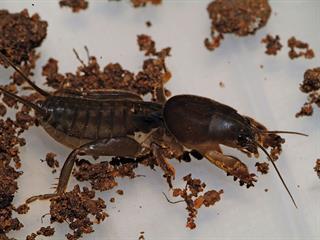The first organic cotton planted on a commercial scale in South Africa was harvested on 29 May at the Hanneline farm in Limpopo. Woolworths, in cooperation with ComMark, SA, the Organic Exchange and the Agricultural Research Council (ARC’s) Institute for Industrial Crops, had established this project in 2004 to produce clothing made from 100% organic cotton.
“By creating new markets for organic cotton and transferring new farming knowledge and skills, the production of organic cotton in South Africa is a means of significantly enhancing the livelihoods of farmers, their families and communities,” said ComMark’s Stephen Hanival.
Hein Schröder, quality manager for Cotton SA, said that the Organic Exchange, SA and the ARC have worked closely to support farmers who are making the transition to organic farming practices. For this project, Woolworths, which had been advocating that farmers grow organic cotton for a long time, approached the Willemse family through Cotton SA. Jacques Willemse had been growing cotton conventionally for nearly 20 years.
He explained that although the organic cotton will initially yield less than conventional cotton, over a period of three to four years farming this way will prove cheaper. Currently, he has 1 000ha under cotton of which 20ha is organically grown. A t the fifth annual Organic Exchange Conference held in Monterey, California in November last year, it was announced that Woolworths was the world’s third-largest consumer of organic cotton. “We’re thrilled that this first commercial-scale planting has been such a success and believe more strongly than ever that organic cotton offers excellent prospects,“ said Darren Todd, Woolworths group head of design, sourcing and technology. – Vivienne Martin
Mohair needs joint ventures for market growth
Mohair farmers can only be expected to supply the industry with enough good quality hair if prices are right and every role player in the industry receives their fair share of the profit, said Louw Retief, president of the Mohair Growers’ Association, in his presidential address at the recent mohair congress in Port Elizabeth. “If producers don’t receive their fair share, the goose that lays the golden eggs will be killed. Because mohair farming is labour- and risk-intensive, mohair prices must exceed the price of competing fibres by enough to make it worthwhile to keep Angoras,” he said. But he conceded it wasn’t only the responsibility of the buyers to ensure a good market for the clip.
“Everyone in the industry must help. Mohair South Africa, for example, can play an even bigger role in market and product development via joint ventures – something the Mohair Trust should finance to a greater extent.” R etief said the market had become more stable, with average prices rising from a low of about R36/kg in 2003 to R78/kg – the best ever in nominal terms.
“However, while remains the biggest producer of quality hair, it’s now growing only 54% of global output against 61% three years ago,” he said. “Still, imports into have declined by 34% to 831 000kg, showing that mohair is not readily available on world markets. Our importance as a reliable supplier is therefore increasing.” ddressing the termination of the controversial New Hair alternative marketing project (mainly because of a lack of financial support from growers), Retief said only time will tell if this was the right decision. Another proposed scheme that’s been turned down is possible risk insurance for Angora goats.
“The executive turned down an offer from insurers to cover goats at R6,40 per animal per year,” he said. O n the positive side was progress with BEE projects, notably at Hardwood, Klipplaat, where emerging mohair farmers are being trained to become independent commercial producers. “If the students pass we will try to furnish them with land, using state assistance.
We’re also working on a code of conduct for the mohair industry.” Regarding the promotion of mohair locally, Retief said the industry can’t afford not to be seen at Nampo, where about 5 000 visitors moved through Action Angora’s exhibit and the Cape Mohair & Wool stall sold R270 000 of mohair products. Meanwhile, he said, researchers at the Grootfontein Agricultural Development Institute were still evaluating jackets for Angora goats after shearing, as well as the possible use of Thermoskin, a new product from New Zealand for reducing cold stress in sheep. – Roelof Bezuidenhout









